Nowadays, wherever you go in the world, it seems like cafés and coffee shops can be found at almost every corner of a city. Many people get their daily cup of Joe out of necessity (or should I say addiction?) thanks to the caffeine kick that helps them stay on top of their game for the whole day. Others, like me, occasionally jump on the bandwagon because the smell of freshly brewed coffee is just too irresistible. However, despite its popularity, coffee is not the most widely consumed drink globally. Tea is.
I don’t know how it is in your part of the world, but looking back, I realized how much tea has been a part of my life since I was little. I still remember how it was customary to serve tea to guests visiting one’s house, and because of this everyone always made sure they stocked up enough tea just in case someone would suddenly knock on their door and come over. My holidays were often filled with admiring dozens of tea packaging mockups my late uncle created for the tea company he used to work for as a graphic designer. Back then, he still did every single design by hand, using oil paints with colors that ran the gamut. (When I was writing this, I could even still remember the smell of a section of his house dedicated to displaying all those beautifully-made tea boxes.) Then, during my high school years, my mom always made me a glass (as opposed to a cup) of lightly-sweetened tea to accompany me studying at night. However, despite my connection with this beverage, I never actually went to a tea plantation until 2015.
There are more than 100,000 hectares (almost 250,000 acres) of tea plantations in Indonesia which are spread mainly across Java and Sumatra. However, I find Indonesian tea leaves not nearly as popular overseas as its coffee beans. Of all tea-producing provinces in the country, West Java contributes the lion’s share to the national tea production since it is home to more than three quarters of all tea plantations in Indonesia. And for most of my life, I’ve lived in or near this province! So, there really was no excuse for me not to set foot in one of its many tea estates. (In the past I only drove by them every time I went to Puncak or other parts of the province.)
However, my maiden trip to a tea plantation happened not in West Java, but more than 3,000 kilometers away across the Indian Ocean during the Spice Odyssey seven years ago. On the way from the town of Anachal in Kerala to the city of Madurai in Tamil Nadu, the taxi driver who took me and James briefly stopped at a tea plantation near the border of the two Indian states. The weather was far from ideal, though, and we only stayed for a few minutes since it was still a long way to our destination. But earlier this year, just a couple of weeks after his first trip to Puncak, James proposed the idea of going back there to properly visit a tea plantation. He suggested a hike to Mount Kencana, which I immediately agreed, for it was the exact same location I looked up months earlier when I was researching places to go hiking around this part of West Java.
The promise of a magnificent view of Mount Gede and Mount Pangrango – both are more than 3,000 meters high and can be visible from Jakarta on clear days – from the hiking trail was the main reason why we chose it, apart from the supposedly picturesque tea plantations blanketing the entire place. In mid-April, we went to Puncak for the second time this year with our minds fixated on the Mount Kencana hiking trail. Going at the end of the rainy season meant we had to be content with whatever weather the heavens threw at us. At the start of the hike, the hilltops were still covered in thick fog, although luckily the majestic peaks of Gede and Pangrago were still discernible. The fog actually reminded me of how Puncak used to look like decades ago when I was a kid. So, despite the prospect of not-so-ideal weather, it did bring back some fond memories from a time when I was too young to appreciate the beauty of this part of Java.
Most people apparently opted for driving down the narrow path, past the last village on the slopes of Mount Kencana, to the farthest point that a car could possibly go. But I decided to park mine just off the main road right at the trailhead, and walked from there. While doing the former must be a lot more convenient and less strenuous, as soon as we turned to the back of a ridge, overlooking the undulating tea plantations and the forest beyond them, we were convinced that we made a decision that suited us better. It was here the noise from the main road, a constant hum thanks to the incessant traffic, suddenly disappeared. All we heard was just a soothing calmness.
Before my eyes was a vista so beautiful it reminded me of the photos of Tuscany I’ve seen in magazines.
“It looks like Tuscany,” James broke the silence as we both marveled at the view while taking shots of this beauty. He just confirmed what I had in my mind.
We continued walking as the sun slowly emerged from behind the hills, showering this landscape with its warmth. In this vast expanse of tea plantations, a few patches were brimming with activities: the local workers diligently plucking the buds of each plant and occasionally chatting with their friends, while others collected the harvest and wrapped them in throw-pillow-sized bundles. Those who saw us gave us a wide and warm smile as we smiled at them and said hello – I found some of them so good-looking they could be models. While the hike itself was quite pleasant – the peaks of the two volcanoes (Gede and Pangrango) were visible at some points from the trail – and not too arduous, it’s encounters like this that make a trip even more memorable.
Two and a half hours since starting the hike – with a lot of stops to take photos – we were nearing the end of the tea plantations before the land gave way to the steep inclination toward the summit of Mount Kencana, 1,803 meters above sea level. At this elevation, the tea trees were almost completely denuded and trimmed, but this is a common practice to keep the plants low which allows easy harvesting. Eventually the leaves will reappear and in no time, workers will return to pluck the buds – the best part of a tea tree – and the cycle repeats.
At the very end of the trail is a set of stairs made of wood to help visitors reach the summit of Mount Kencana. However, since by this time the peaks of the two volcanoes were already completely covered by clouds, we decided not to go further and headed down instead. No regrets though, for we were already so elated with the fact that we finally made a proper visit to a working tea plantation – a spectacular one, no less. Now, every time I go to the supermarket and go to the tea section, I will always remember that day when I was surrounded by tea trees as far as the eye can see.
Have you had a cup of tea today?
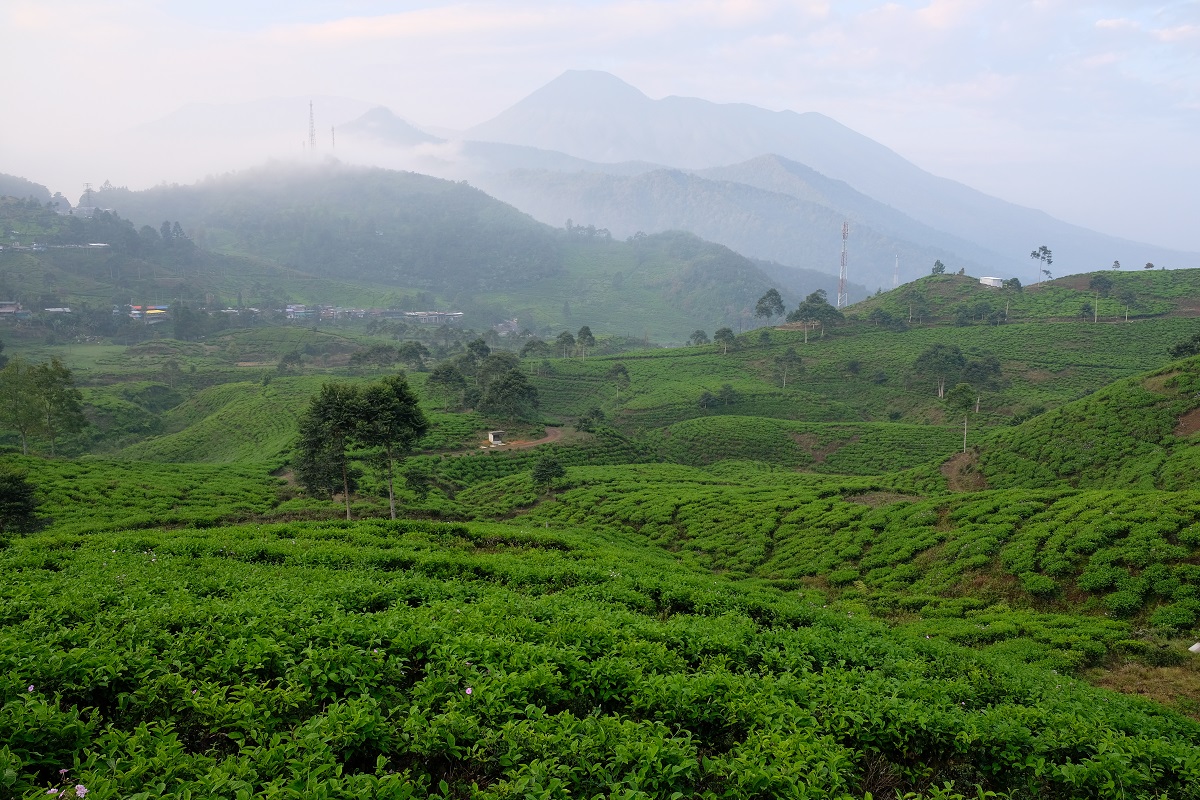





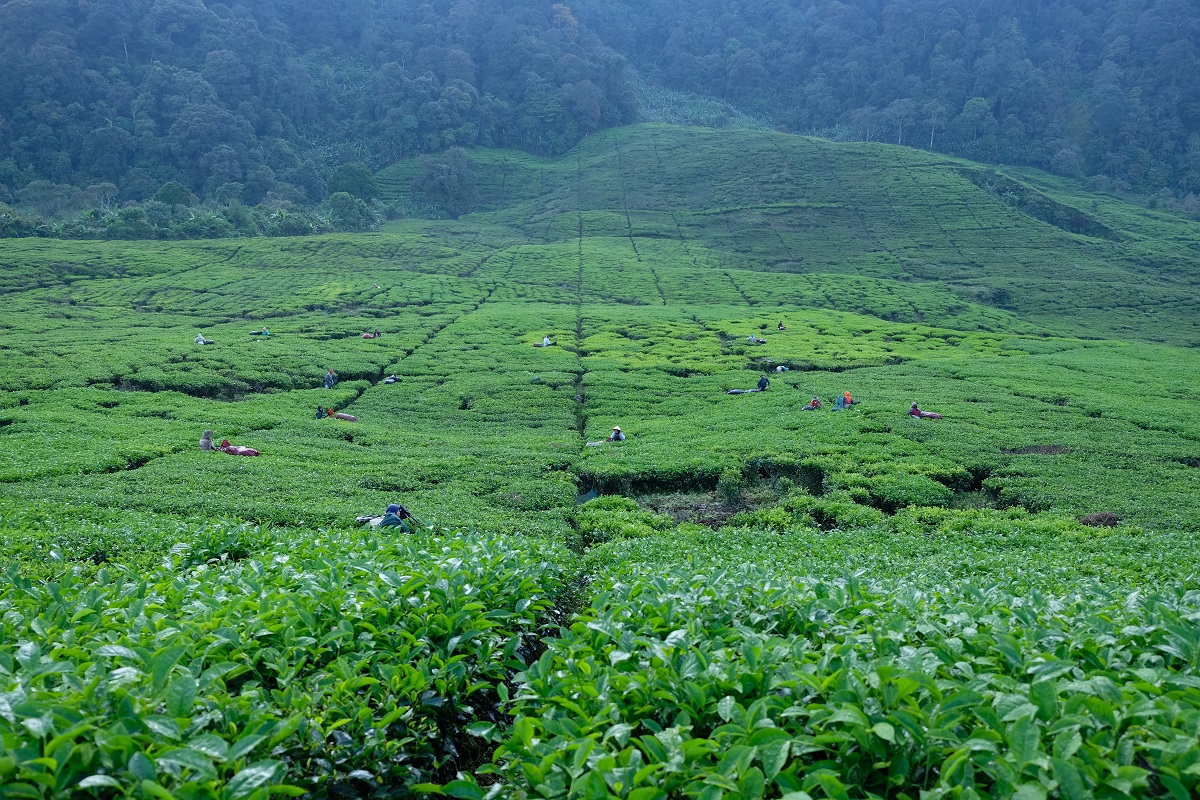
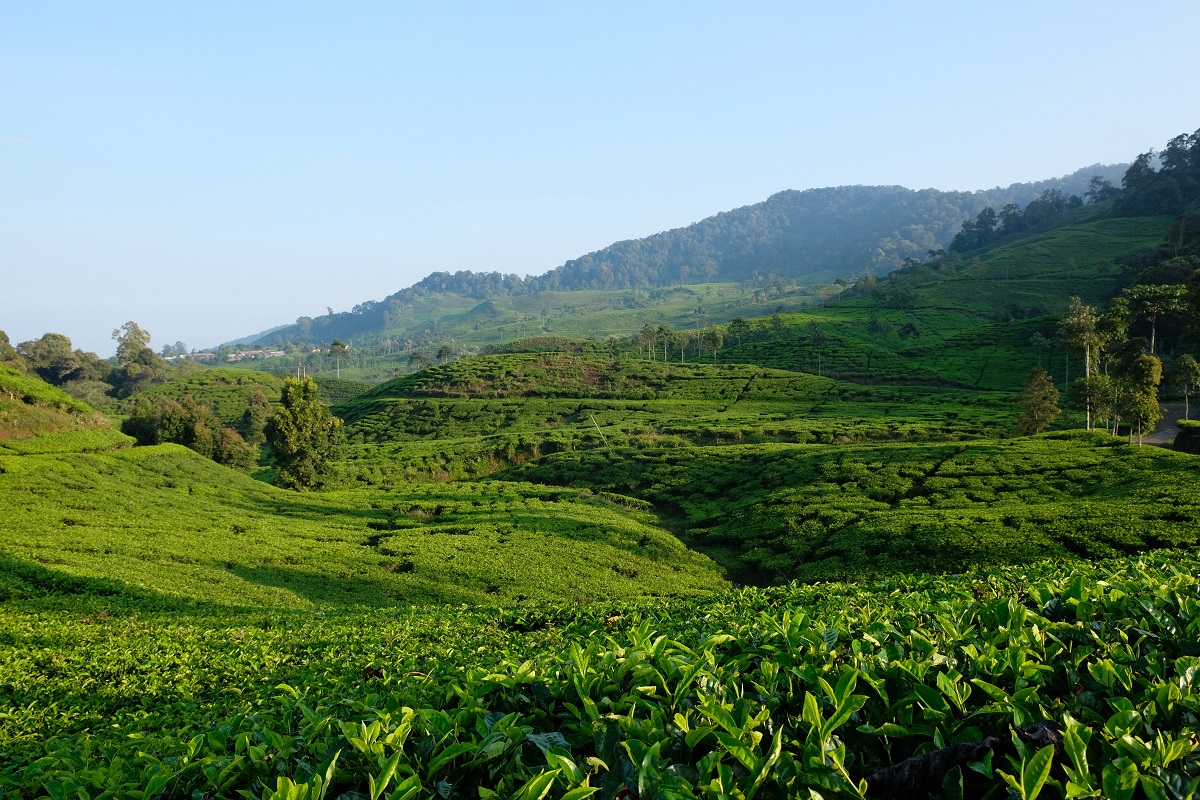
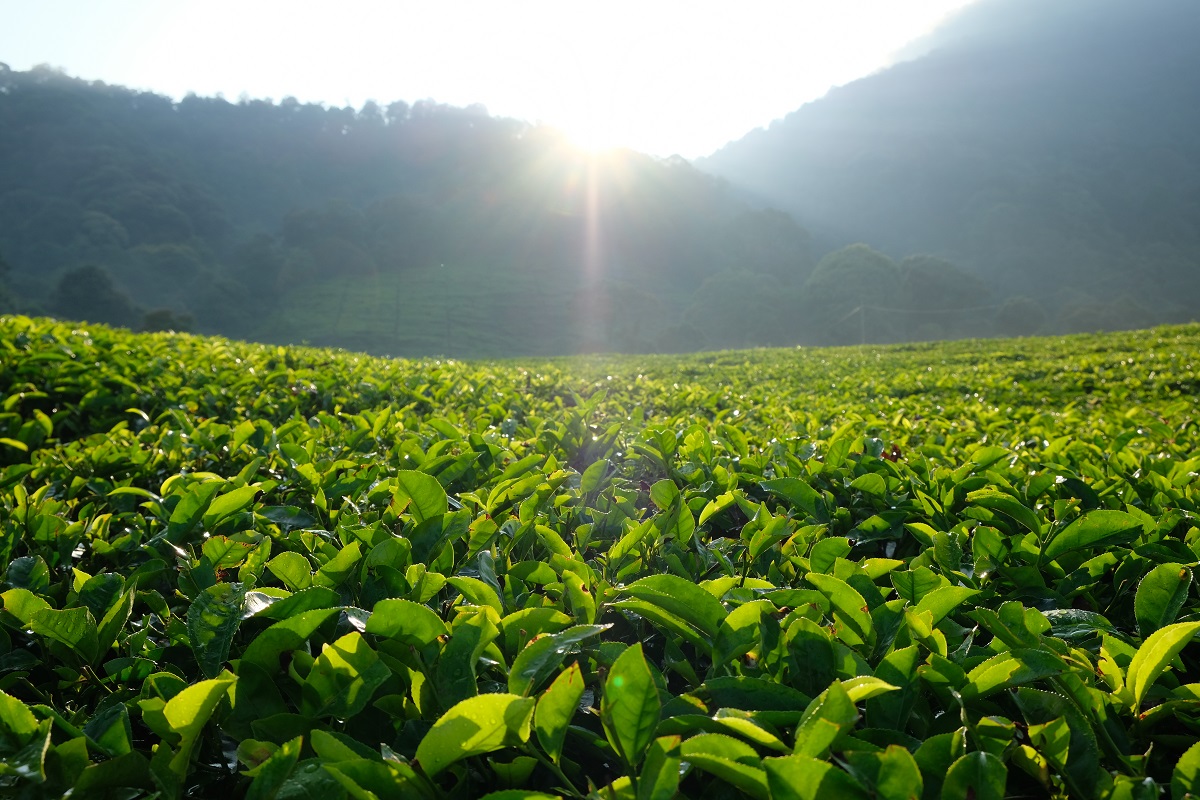


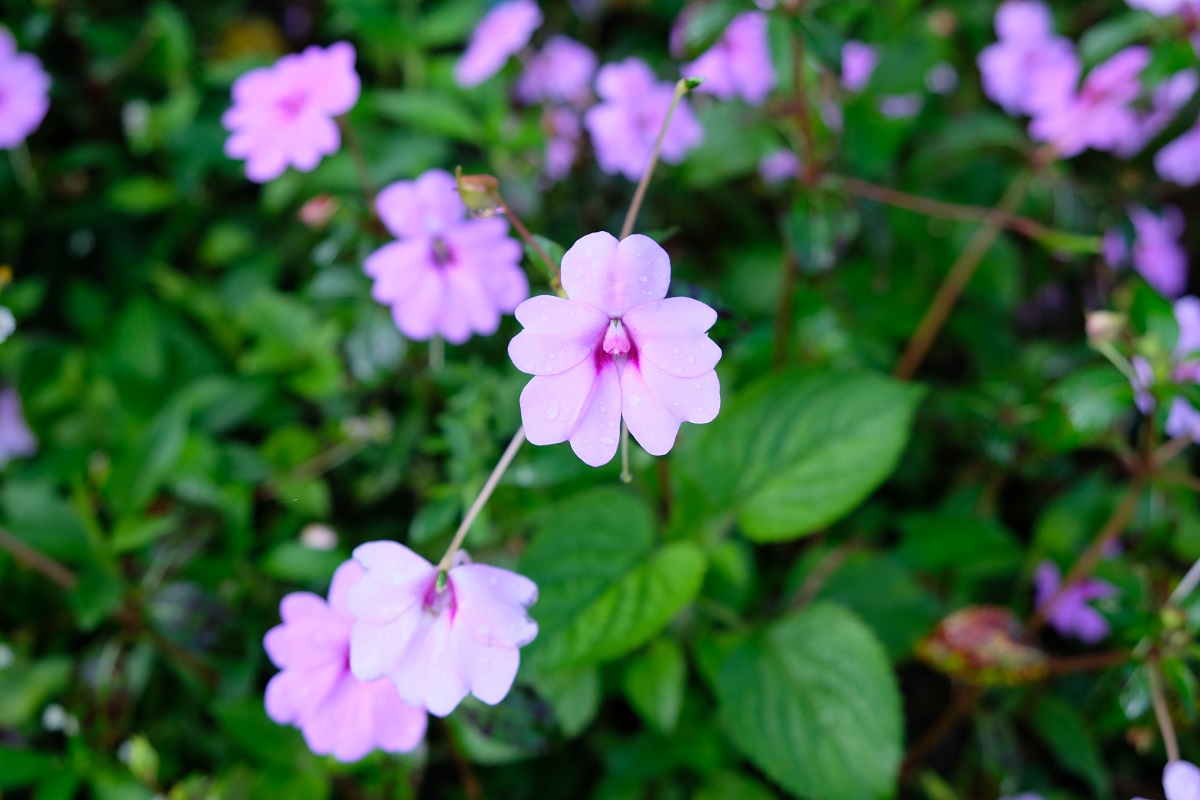

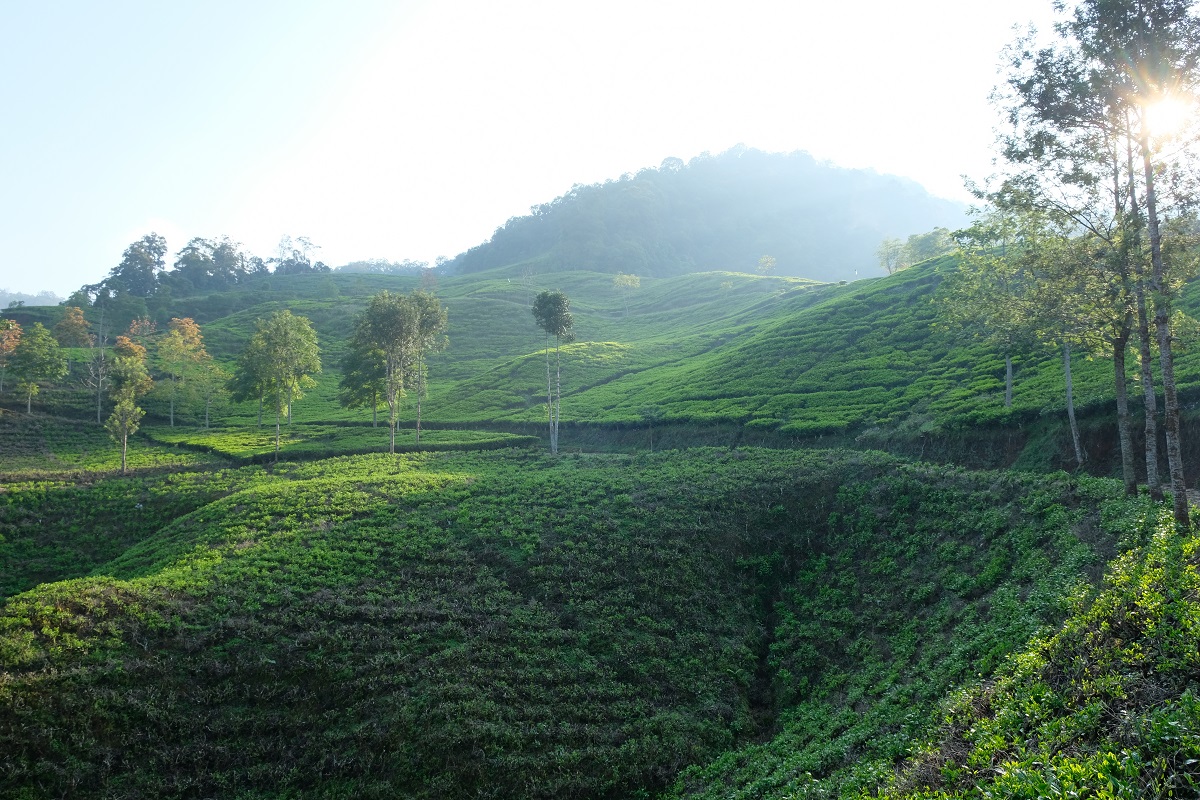
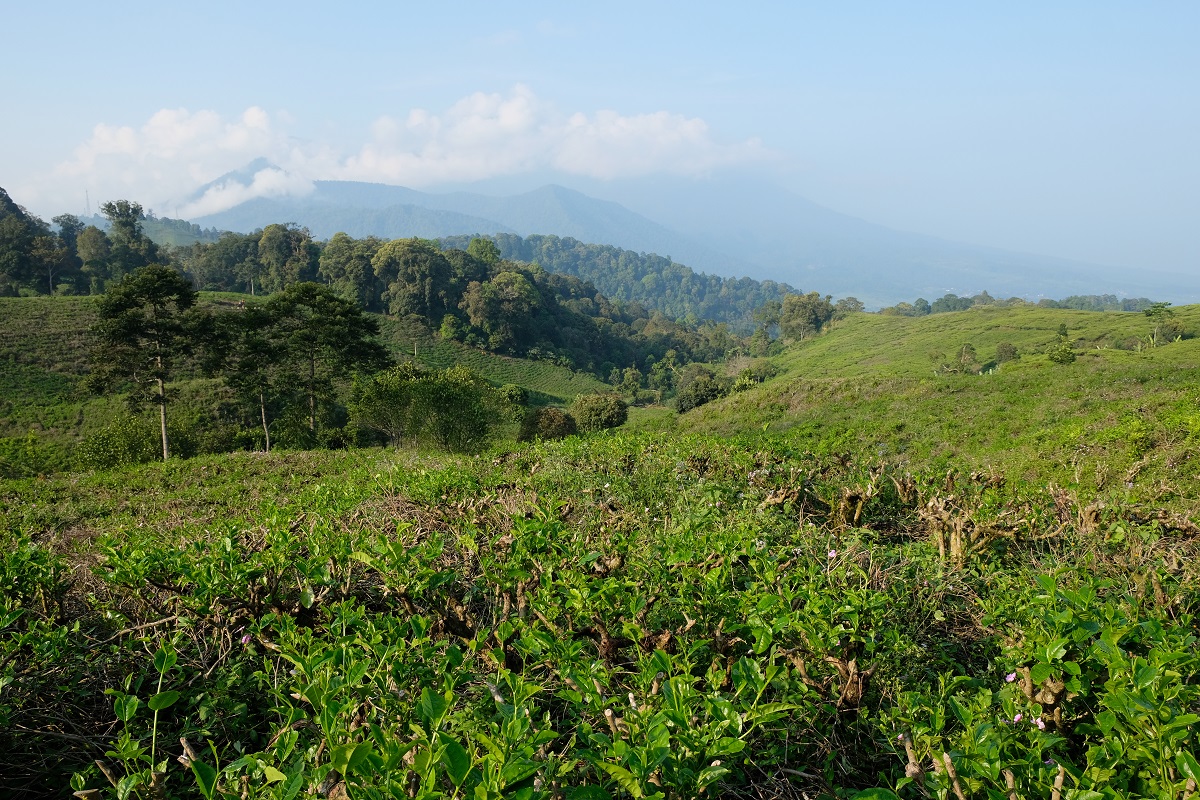
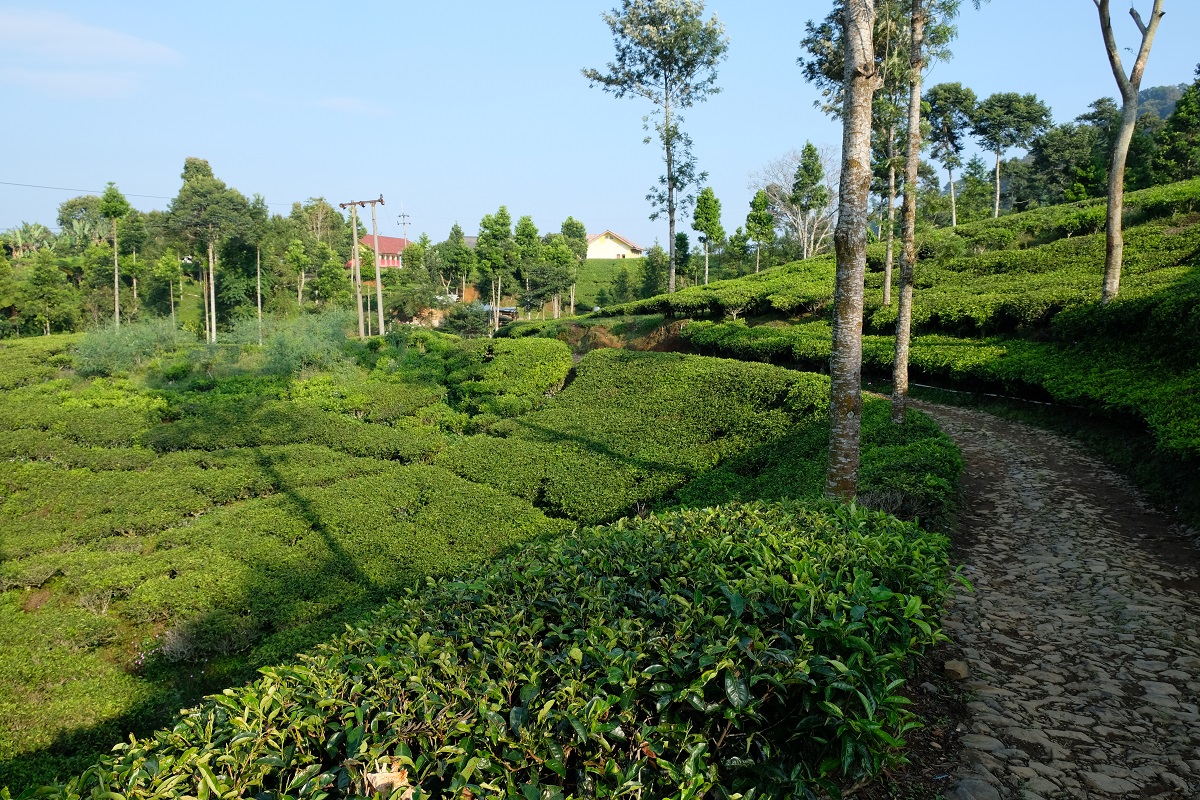




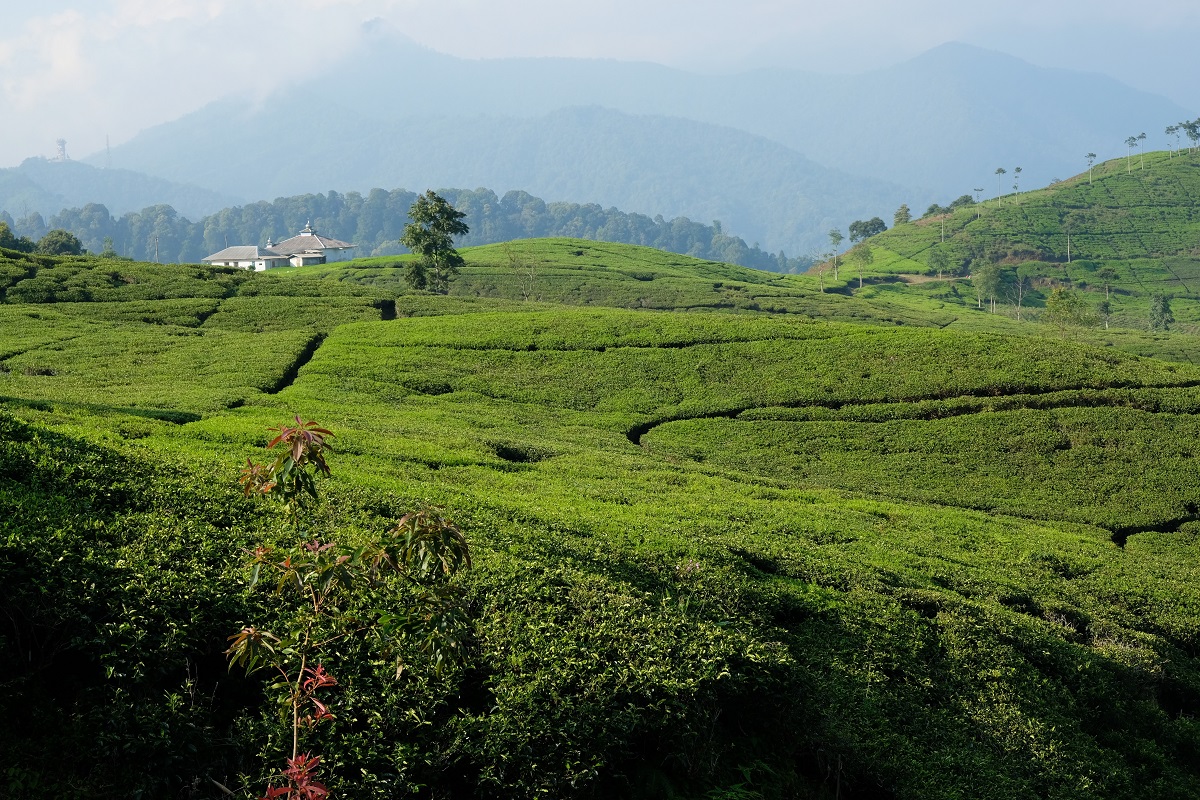

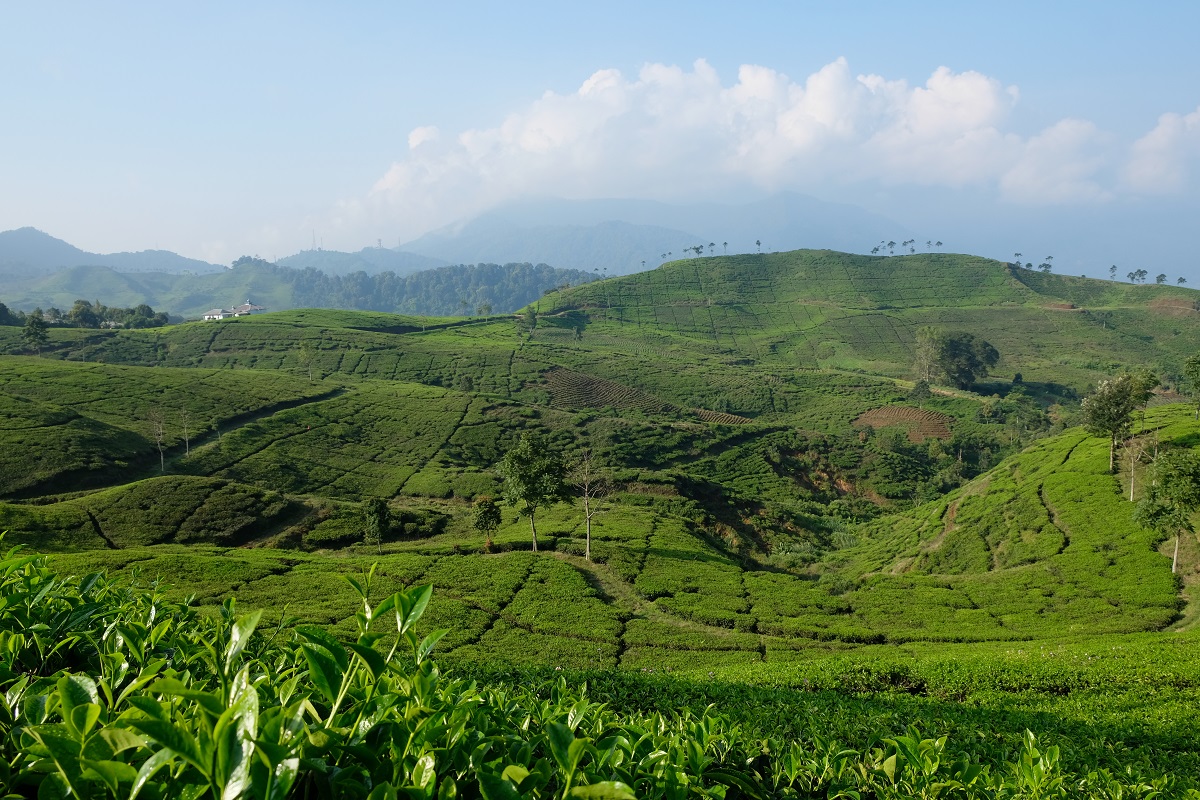



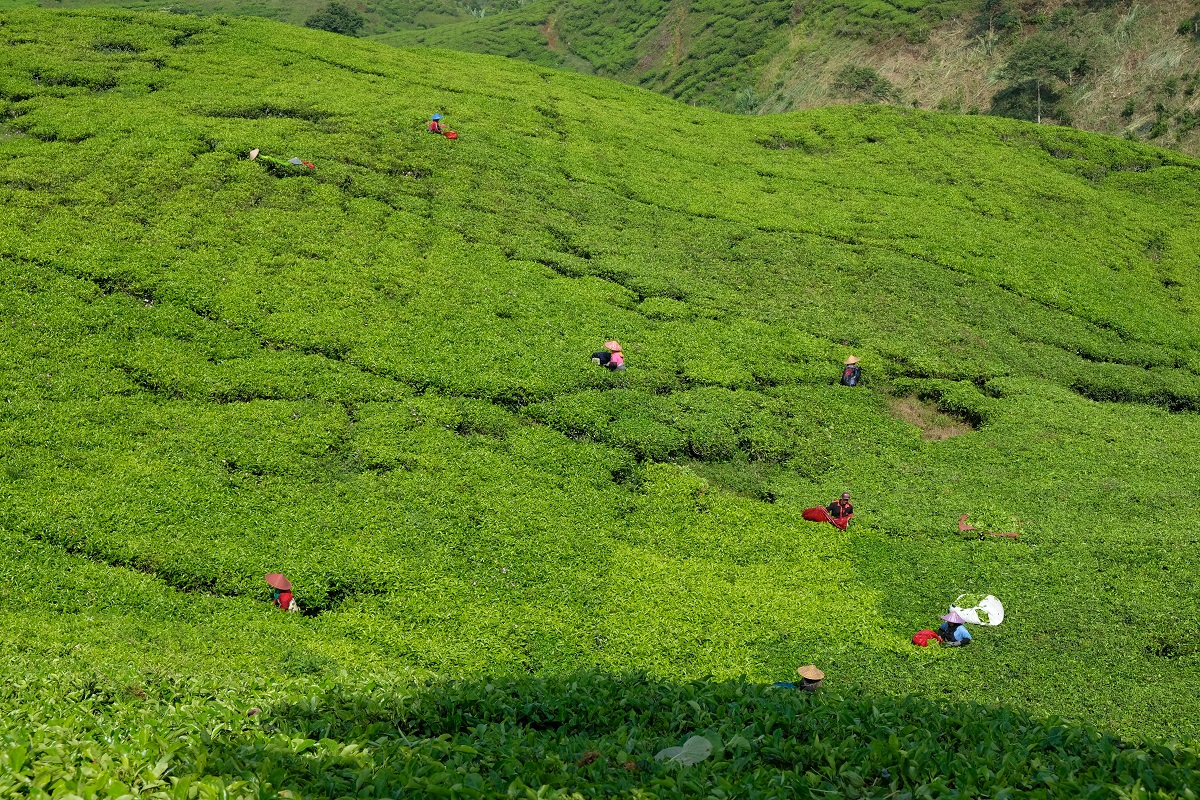


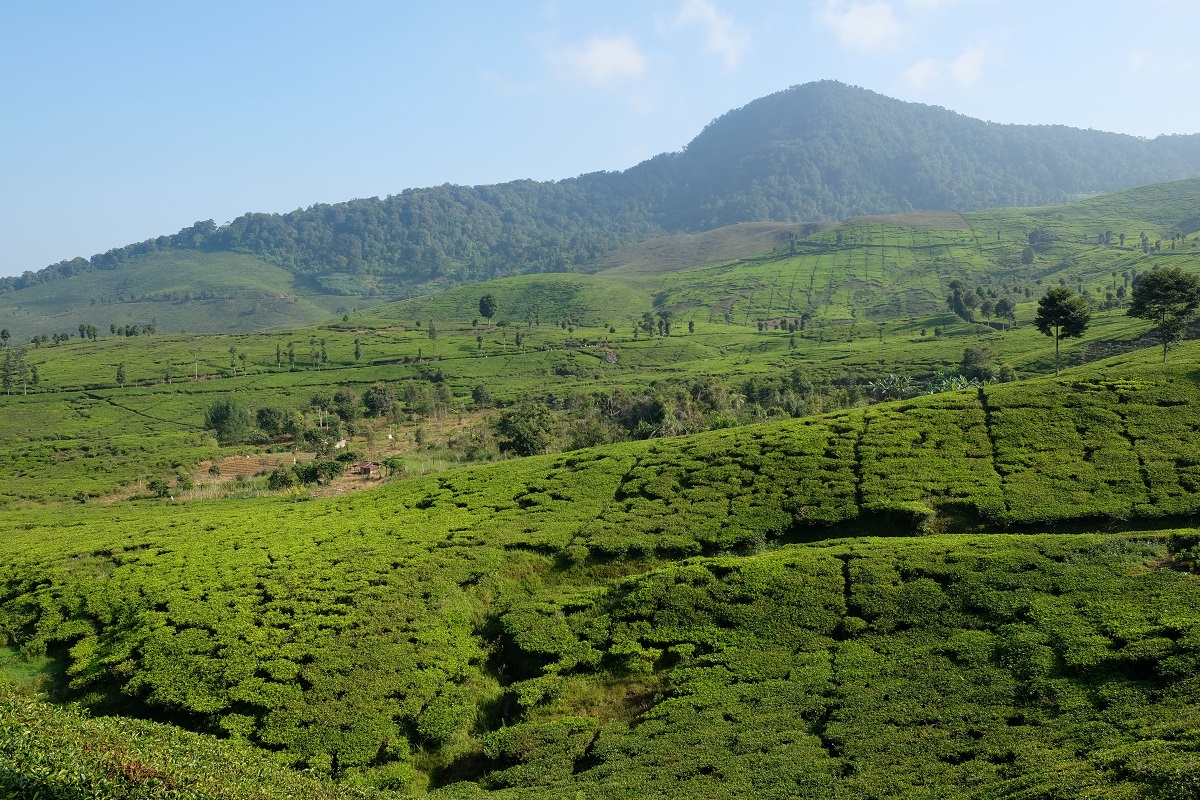




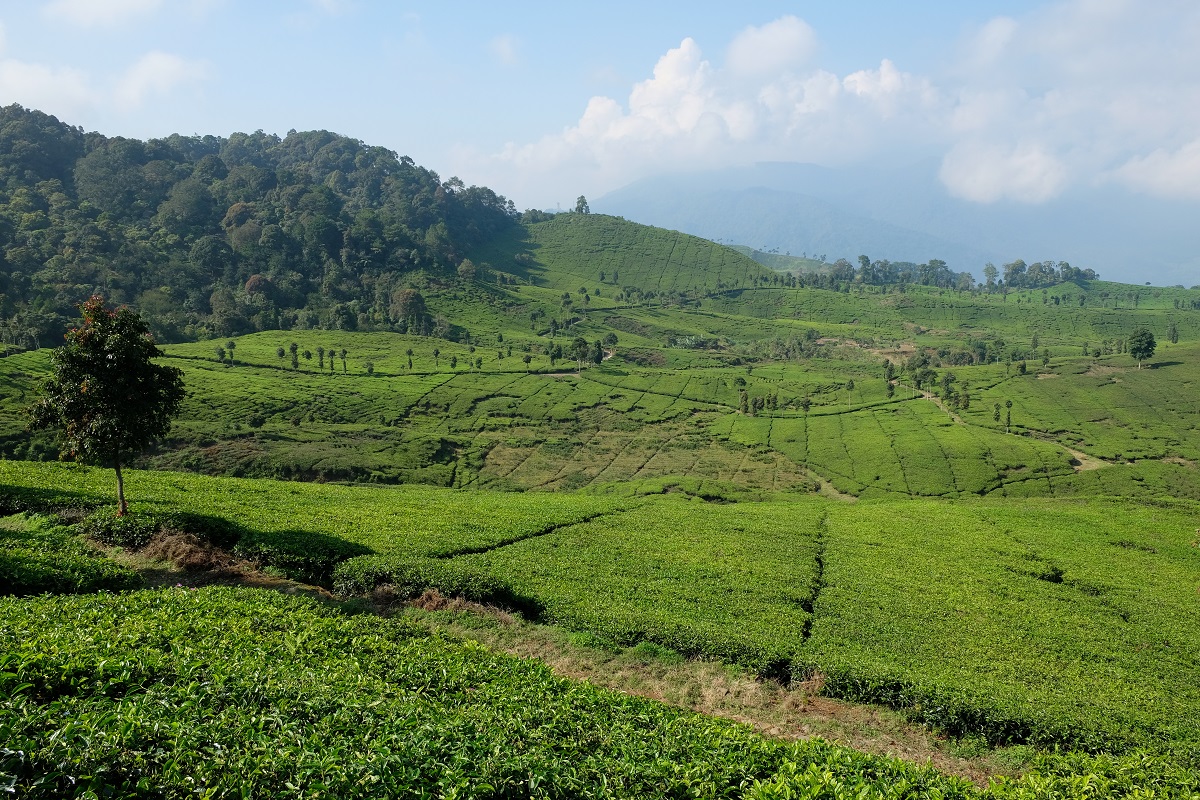

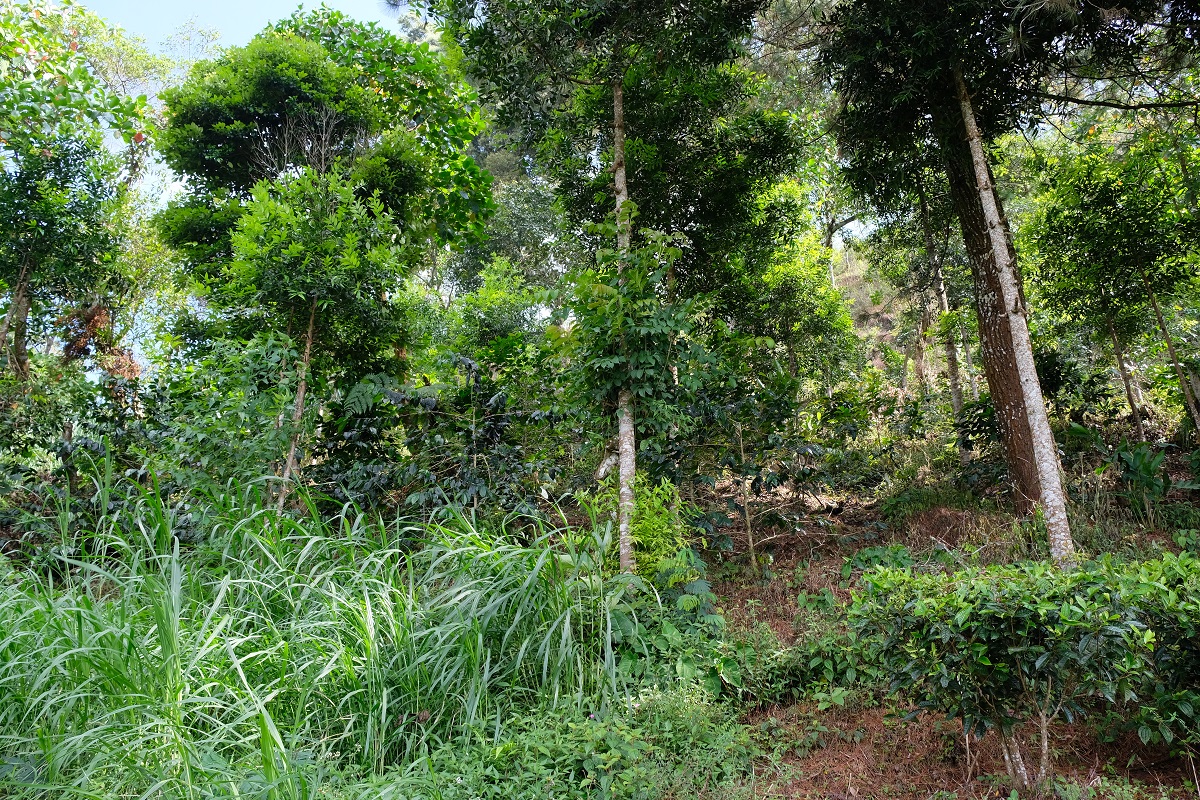
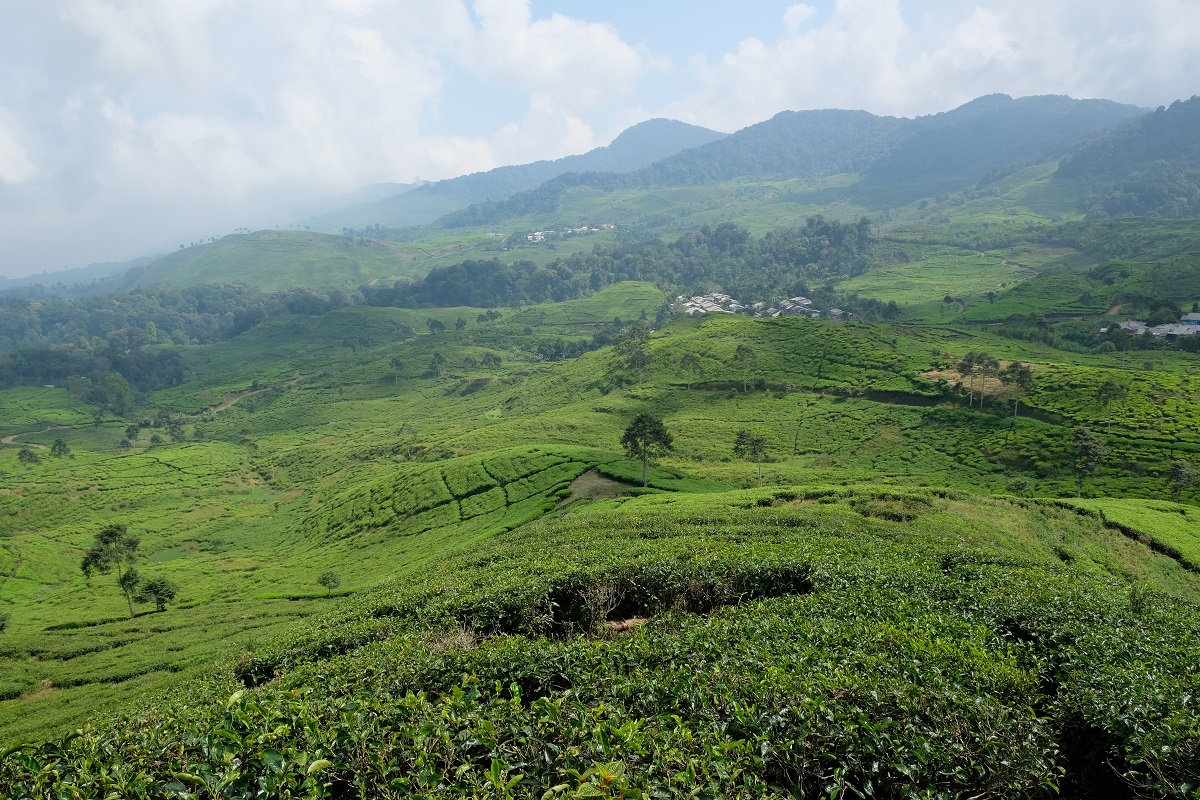
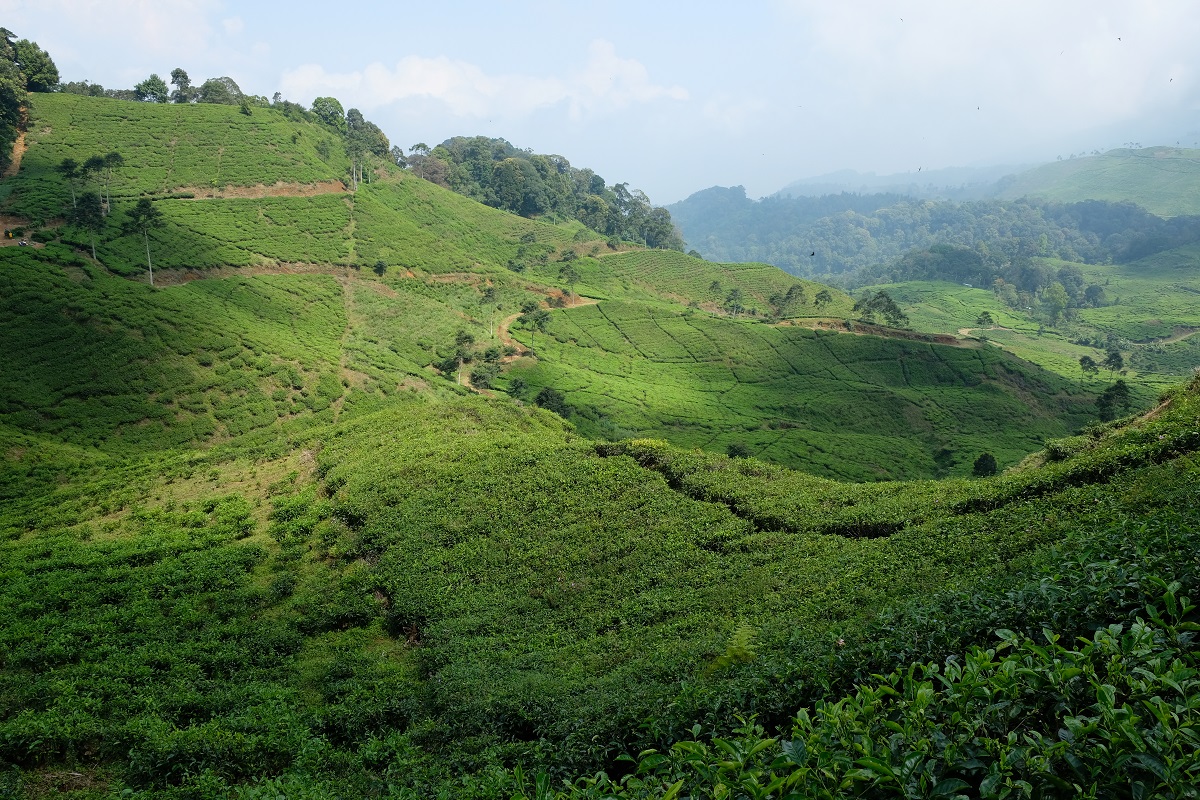
I learnt something today. I didn’t know about tea estates in Java. Now I need to taste that tea.
LikeLiked by 1 person
I just looked up the data and apparently the biggest buyers of Indonesian tea are Germany, the Netherlands, Taiwan, and… India! I wonder if somewhere in your country you can find Indonesian tea brands, or if the leaves are sold in bulk.
LikeLiked by 1 person
Interesting. I haven’t seen Indonesian tea brands. It may be that the leaves are mixed with other estate teas, when single origin is not desired. But, as you say, it may be that in speciality shops I could find the leaves.
LikeLiked by 1 person
I don’t know what Indonesian tea brands are available outside the country, but if you can find Tong Tji you may want to try its jasmine tea. It’s my mom’s favorite.
LikeLiked by 1 person
I have never visited a tea growing region but when I see images of the places they always look so peaceful and serene! This is no different! Cheers Bama, hope you are keeping well x
LikeLiked by 1 person
I don’t know how busy this trail usually is on weekends, but I’m glad I went on a weekday. Although given the expanse of the tea plantations, I guess even if there are a lot of people flocking to this place, you will still be able to find quiet and peaceful corners along the way. I hope all is well with you too, Anna!
LikeLiked by 1 person
I knew Indonesia grows a lot of coffee but I wasn’t aware of the extent of tea plantations there. Nor about exports to India! The mention of tea served in a glass made me nostalgic for home Bama. And those gorgeous landscapes for our plantation days…could almost smell the tea:)
LikeLiked by 1 person
India produces some of the most well-known tea varieties in the world, so it’s understandable if Indonesian tea is not so popular there, although I am curious about those export numbers. I’m sure you have a lot of fond memories from your plantation days, Madhu. I can imagine had I spent my childhood near a tea plantation, I would’ve had explored the far corners of it and got lost every now and then!
LikeLike
As a tea drinker, I am delighted to hear that it is the most widely consumed drink in the world. Tea has been a part of my life since I was little too. My grandmother would always have tea time in the afternoon. I didn’t drink tea then, but I would always go for the cookies! How fun to visit a tea plantation and go for an epic hike. Your pictures look gorgeous, even with the morning fog. I love how lush and green everything looks. It does look a bit like Tuscany with all those rolling hills.
LikeLiked by 1 person
I would go for the cookies too! That got me thinking how nice it would be if someone makes tea-flavored cookies. Someone out there must have thought of it! I’m glad the weather improved as the hiking progressed, although in the end those peaks were completely shrouded by clouds. But that’s fine.
LikeLiked by 1 person
What a beautiful and educational outing you had. The hike up to and through Mount Kencana is so beautiful – I can see why both you and James thought it reminded you of Tuscany! I think experiencing the trail through fog and then through sunshine added to the magic of the experience.
It’s a marvel to sometimes think of the hard work of the people in the field that starts the process of us getting to enjoy a cup of tea in our hands. The things we often take for granted.
Next time I’m at the Asian grocer, lll keep a closer look for the Indonesian brand tea. When I work at home (3 days a week), I have a tea (bittermelon tea) mid morning; I have a coffee first thing cuz I can’t function without it. When I go into the office, I treat myself to iced lemonade black tea from Starbucks. Even in the wintertime. 😆
LikeLiked by 1 person
The things we often take for granted, indeed. I think it’s important for us who have been living in cities for most of our lives to go to the countryside and see where the food and beverages we consume come from.
I did not know that there is bittermelon tea! While I enjoy it stir fried and mixed with other ingredients, I really can’t imagine how it tastes when it’s brewed. Is it really bitter?
Iced lemonade in wintertime? Why not! 😁
LikeLiked by 2 people
The bittermelon tea is not too bad. I drink my tea black so I don’t get too bothered by it. Its medicinal benefits include maintaining good blood sugar level and cholesterol! Speaking like an old person now. 😆
LikeLiked by 1 person
Oh tell me about it! Now I’m all into things that are clinically proven to have medicinal benefits. A decade ago, I wasn’t even thinking of what I ate! 😆
LikeLiked by 1 person
Gorgeous pictures Bama. The vibrant green with layers of mountains in the distance and the colourful workers, it looks and sounds beautiful. We visited tea plantations in Sri Lanka and Malaysia and I always love how the tea trees look like a plush carpet, like you said. Funny that this is the first time you visited a tree plantation especially with your uncle and his job! 😊
LikeLiked by 1 person
The next time I go to Sri Lanka, I really should pay a visit to its tea plantations. I’ve only heard and read good things about them.
I know, right? I shouldn’t have waited for decades to visit a tea plantation which can easily be found in this part of Java.
LikeLike
“Wherever you look, there’s only beauty” – what an appropriate description of this landscape, Bama. Glad you managed to explore the tea plantations near you – and hiking among them is perhaps the best way to experience them. I love that you had both mist and sunshine on your hike, which I think create a nice contrast in the experience of the landscape.
LikeLiked by 1 person
I can imagine you also enjoying this hike, Jolandi. It’s like walking next to a plant from which a product you really love is derived. In hindsight, I guess you’re right about the weather changes as the hike progressed. It did create variations in the mood of my photos.
LikeLiked by 1 person
Thanks for writing about my favourite beverage. I actually thought coffee surpassed tea in popularity probably because most people here prefer coffee—a drink I rarely have (unless I’m in Indonesia or Vietnam). I’m sorry to say, I never drank tea in Indonesia. I was too hooked on kopisusu.
LikeLiked by 1 person
I know, Mallee. Coffee is so wildly popular now I feel like it’s getting harder to find a place that does tea well. I totally understand why you enjoyed kopi susu so much. As someone who don’t really drink coffee, I wouldn’t say no if someone offers me this particular drink.
LikeLiked by 1 person
Wow this place looks fantastic, and I love the two ambiences with the fog and the sun! I also had no idea tea trees looked like this! Thanks for sharing this wonderful experience, I really want to see them with my own eyes one day!
LikeLiked by 1 person
It does! If you’re really curious about visiting tea plantations, there are so many tea-growing regions in Asia to choose from. It would be even better if you end that visit with a cup of tea!
LikeLiked by 1 person
It’s nice to know that there are tea plantations in Indonesia. As you said, Indonesia is more well known for its coffee, especially kopi luwak. I’ve been to tea plantations in Malaysia and Thailand though.
LikeLiked by 1 person
After your comment as well as others’, I conclude that Indonesian tea plantations are known almost exclusively by Indonesians. But at least now you know that just south of Jakarta you can actually find these.
LikeLiked by 1 person
That was a gorgeous hike, Bama. The early mistiness, especially the shot with the layered peaks, made for a great start and a nice contrast with the sunniness later. I don’t think I’ve ever walked IN a tea plantation; I have viewed terraces of tea in Nepal but only from a distance and from above. I would truly love to do a peaceful hike like this one you and James did!
LikeLiked by 1 person
I remember being a bit skeptical about the weather that day. But I’m glad it turned out better than what I expected. I have a feeling you would also enjoy the things that we saw along this hiking trail, Lex. I want to say I’d really love to take you to some of Java’s tea plantations, but the thing is there are so many things to see here when you do come one day! We’ll see.
LikeLiked by 1 person
Mas Bamaaaa….
Mau ngaku aja sih, saya hanya peminum teh, kopi dan air serta minuman-minuman non alkohol lainnya, tapi beneran bukan penikmat hehe. Mungkin seperti anak-anak sekarang bilang, B aja.jadi hanya buat glek-glek-glek gitu 🤣 atau sekedar supaya lidah gak bosen dengan ‘tanpa rasa’
Meski gitu, jaman kecil ya suka tea walking siii ke Puncak meski ga jauh (dan baru tau seluas itu ya di Puncak), gedean dikit ya mainnya ke Pangalengan, tapi yang paling seru di Tambi siih dekat Dieng itu karena bisa visit pabrik (namanya juga bawa anak hehee) dan kalo dari Bandung suka kangen lewat lembang kan kebon tehnya juga bagus (dan ngopi di warung bukan ngeteh😜)
Dan meski aku suka teh yang peppermint, tapi ya seneng banget dapat teh iLAM (dari Nepal) dan Masala tea hehe karena ngebayangin letaknya ilam plantation itu dekat dengan Darjeeling… jadi minum tehnya dulu sebelum menjejak tanahnya hahaha…btw, foto-fotonya bikin mata adem deh, jd pengen jalan di antara teh…
LikeLiked by 1 person
Mbak Riyanti, panjang umur. Ini saya lagi di Kamboja lagi setelah yang pertama kali 11 tahun yang lalu dan pas kemarin ke Ankor National Museum di Siem Reap dan baca soal Sambor Prei Kuk saya langsung inget Mbak Riyanti udah pernah ke sana.
Kalau saya tuh sebenernya suka banget sama susu sapi, cuma semakin berumur perut kok rasanya semakin gak bisa kompromi sama minuman yang satu ini. Dan ternyata memang betul, mayoritas orang Asia itu berdasarkan riset yang pernah saya baca memang lebih cenderung sensitif terhadap laktosa ketika mulai beranjak dewasa.
Kalau teh itu buat saya entah sugesti atau apa selalu bisa bikin mood jadi enak, hati jadi tenang. 😄 Ngomong-ngomong soal Dieng, jadi inget waktu dulu road trip saya dibikin terkagum-kagum sama kebun (karena lagi nyetir jadi gak terlalu perhatiin tanamannya apa) yang terbentang di lembah-lembah di sana. Nah soal Pangalengan, ini masih jadi wish list saya nih mbak.
Wahh, saya kayaknya belum pernah minum teh Ilam, tapi saya inget chai yang saya minum di Pokhara itu enak pake banget!
LikeLike
Duh jadi nungguin foto2 mas Bama di Kamboja… *nyaripintukemanaaja
LikeLiked by 1 person
Foto-foto teasernya sudah tayang ya mbak. Tapi cerita lengkapnya baru tahun depan, hehe.
LikeLiked by 1 person
How fascinating Bama. Very educational. Thank you. Cheers!
LikeLiked by 1 person
Glad you enjoyed this, John and Susan!
LikeLike
Such a pleasure to look at these photos, Bama! The landscape is just wow, whether it’s shrouded in mist or bathed in sunlight. I think the volcanoes create a perfect backdrop. Looking at your photos makes me want to visit a tea plantation. I’ve never been to one, even though I passed many of them. I was afraid that the farmers would chase me away 🙂
LikeLiked by 1 person
The lush carpet of greenery really exudes a calm feeling, doesn’t it? Ha! Why would the farmers want to chase you? 😀 Are they worried that you would steal some tea buds?
LikeLiked by 1 person
That is one reason. But they are more afraid of people who go there for the gram 🙂 These unwanted visitors would stay for hours and they don’t mind touching/picking the tea plants.
LikeLiked by 1 person
Ahhh yes. All for the gram. I remember seven or eight years ago, taking travel photos was a lot easier since Instagram had not yet become the main driving force behind mass tourism.
LikeLike
Lovely pictures Bama – I love all those shades of green and I was tempted to dive into my laptop’s monitor to smell the tea leaves. Since they aren’t roasted yet, do they have a fragrance?
Tea was my parent’s go to drink to relax after a long day or week. Their preference was the iron goddess of mercy (Oolong) so that’s what I drank as a kid.
p.s. both you and James write so well.
LikeLiked by 1 person
Thanks Matt! Actually fresh tea leaves don’t really have a smell. It’s amazing to think how those who “invented” tea came with the idea of roasting the buds of a tea tree, and brew it. He or she might have never thought that this beverage would eventually become the most popular drink in the world.
I’ve only tried Oolong a few times and to me it’s more like an acquired taste. I prefer jasmine tea though — probably because that’s what I grew up drinking — and I can never say no to an Earl Grey. I guess I like tea with a bit of sweet scent.
You’re too kind! I just really love writing, and even though my work doesn’t involve writing, whenever an opportunity arises for me to do a little bit of it, I would happily do it.
LikeLiked by 1 person
First of all I am glad to read that Tea is a more preferred drink than coffee around the world. I don’t know this. Tea is my drink too. And, even now we offer tea to anybody who comes visiting us at home. This lovely post of yours transported me to my childhood. My grandpa and granny lived in a tea estate in Upper Assam. My mother spent her childhood there. Every winter when school would close for 3 months we would go visiting them in the Tea Estate. Back then I never understood the novelty of whatever I was experiencing. All of those beautiful days only remain in my memories now. I wish I could get to those days and relive them once again.
LikeLiked by 2 people
I think the tradition of serving tea to your guests is something worth preserving. Unfortunately, now in Indonesia a lot of people (including my mom) choose to provide mineral water in plastic cup for convenience. How nice that you grew up visiting tea estates in Assam, one of the most famous places in the world when it comes to tea.
LikeLiked by 1 person
Now that I’ve seen how tea is grown and harvested and the immense work that goes into maintaining those plantations, I do appreciate a cup of the drink much more than before. It was a little disappointing at first to see only the faint outlines of Gede and Pangrango at the start of the hike, but the sheer beauty of the landscape we walked through over the next few hours more than compensated for it. This was truly a half-day well spent and I would love to explore more of West Java’s tea country when given the chance!
LikeLiked by 1 person
The ‘good’ thing about not being able to see Gede and Pangrango near the end of the hike was we didn’t have to go all the way to the summit of Mount Kencana. 😄
I’ve heard and read about Pangalengan, just south of Bandung. The tea plantations there seem to be even more expansive than what we saw in Puncak. And there are a few historical sites too in the area. Someday!
LikeLiked by 1 person
This trip of yours has a little bit of everything I love: a nice hike, picturesque scenes, and then the primary goal of tea plantations. Brilliant. The mysticism of the thick fog during your hike adds to the intrigue 🙂 It is incredible how we can overlook places generally right next door, only to find out later they hold such marvels. The view of the valley certainly has a tremendous Tuscan feel, but the photo of the sun flowing through the tea leaves makes the scene even more beautiful than I could imagine. Great shot. Also, to be able to communicate with the workers and learn a bit more is something special I always wish I could talk to the locals out in the countryside when visiting a new place—another masterpiece from you, Bama. I’ll go have my cup of tea right now!
LikeLiked by 1 person
If you ever find yourself visiting this place, I know we can expect really beautiful and sublime photos from you, Randall. The hike to Mount Kencana does have many things you like, chiefly the landscape itself. And I believe the locals would be thrilled to see a foreigner coming near where they live and work — some would even ask for a photo or two with you!
LikeLike
I’ll be honest, Bama, I… don’t understand tea. My partner and her family believe that there’s a tea to cure all ailments in the known world; I’ve tried all kinds of tea, from the white one to more ‘mainsteam’ ones, at Handunugoda plantation down in Sri Lanka. It all tastes the same to me. I’m a coffee man, me.
But I will say this: there’s no other ‘agricultural’ sight as beautiful, as harmonious as the one of a tea plantation as soon as the rains have lifted. Your second photo in particular just took my breath away.
LikeLiked by 1 person
Ha! Well, you’re Italian. You even have specific names for all sorts of beverages made from coffee. Have you tried some of the teas they have in Japan? Like matcha (Japanese powdered green tea) and hojicha (also green tea but roasted in a different way) which have unique taste and aroma unlike other teas?
I agree with you about tea plantations — the fact that we only harvest the tip of the branches helps keep the uniformity of the trees.
LikeLiked by 1 person
Tried many of those, Bama, but in all honesty I don’t like the taste!
LikeLiked by 1 person
Ahh, I see. It’s alright, Fabrizio.
LikeLiked by 1 person
I also find tea plantations very attractive places to visit, with my favorite being in Sri Lanka. However, the one you visited here looks really huge and incredibly scenic. The view of the tea plants carpeting the entire hillscape stretching into the horizon in the last two photos really are amazing.
LikeLiked by 1 person
I guess the next time I go to Sri Lanka, I really should visit some of its tea plantations since many people said good things about them. Speaking of the one I went to on the slopes of Mount Kencana, I was also pleasantly surprised to see how vast and scenic it was.
LikeLiked by 1 person
The central highlands of Sri Lanka are fantastic, so you should go visit the tea plantations there next time.
I’m assuming the tea farm on the slopes of Mt Kencana is a particularly big one and not all tea plantations are the same size?
LikeLiked by 1 person
I surely will!
Well, it’s hard to tell for sure since this was my first ever proper visit to a tea plantation. However, from what I saw from pictures on the Internet, other parts of West Java seem to have even larger tea estates. I’ll have to check them out one day.
LikeLiked by 1 person
That there are even larger tea estates than this one is incredible. I hope you do check them out someday.
LikeLiked by 1 person